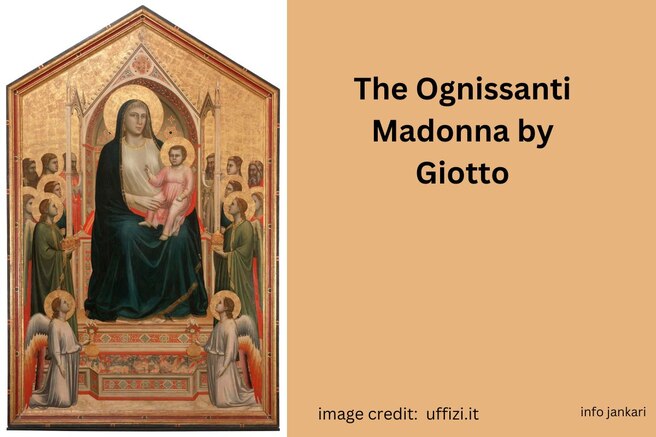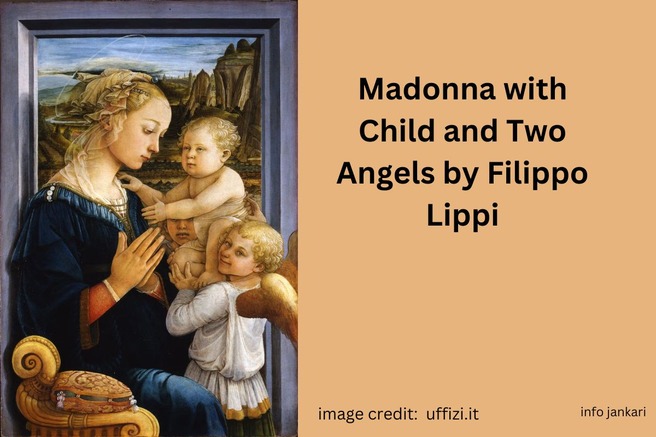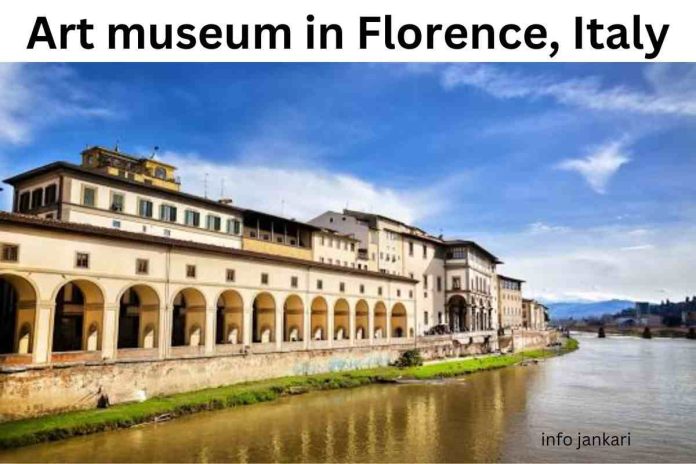The Uffizi Gallery in Florence is undoubtedly one of the most famous museums in the world. So don’t miss a visit to the Uffizi Gallery during your stay in Florence, since this is a must-see destination. But, it could be a little bit exhausting to stop in front of each work in all its 45 halls. So that you don’t miss anything, here is a list of the top 10 things to see at the Uffizi Gallery.
Top 10 Things to See at the Uffizi Gallery
While its walls safeguard unique artworks and masterpieces, works of art by great Italian artists such as Botticelli, Cimabue, Giotto, Michelangelo and Raffaello, just to name a few. These are the best.
1. The Ognissanti Madonna by Giotto
This is a large altarpiece, painted by Giotto around 1310 for the Florentine Church of Ognissanti. It is a very important landmark in art history. Giotto in fact, upset the painting and the representation of the human figure. The figures appear to be inserted in a real, well-defined space, they are more plausible, human and no longer flat as puppets on a flat surface. It is just from here that the figurative revolution, better known as the Renaissance, begins.

2. Annunciation by Simone Martini and Lippo Memmi
It was painted around 1333 by Simone Martini and his brother-in-law Lippo Menni for the altar of Sant’Ansano in the Cathedral of Siena. The Annunciation is considered one of the greatest examples of Sienese Gothic painting. This style is opposite to the Florentine, the first is characterized by the wonderful elegance of both line and color, while the second is more related to volume and shape.
3. Portraits of the Duke and Duchess of Urbino by Piero della Francesca
Painted by Piero della Francesca, the diptych of the Dukes of Urbino depicts Federico da Montefeltro and his wife Battista Sforza. Piero della Francesca has a rational and metaphysical style that perfectly suits the Renaissance man, conscious of his role’s centrality and the importance of his intelligence and culture.
4. Madonna with Child and Two Angels by Filippo Lippi
This is a work painted around 1465 by Filippo Lippi, and also one of the most admired paintings of the Renaissance. The life of Filippo Lippi is very interesting, as it seems a tale. He was a Carmelite monk but, not exactly devoted to his religious duties, he fell in love with the nun Lucrezia Buti. His love was returned and, after years of a secret affair, they were forced to renounce their religious votes and had two children. This painting is particularly famous because the Madonna looks like Lucrezia Buti.

5. La Primavera by Botticelli
This is probably the most famous work of the Uffizi Gallery. It was painted by Botticelli for Lorenzo di Pierfrancesco de’ Medici, a cousin of Lorenzo the Magnificent. This painting has many allegorical meanings, that are of difficult interpretation and still uncertain. There are many theories, but what is undeniable is its refinement, the naturalistic details, the skilful use of color, the elegance of the figures and the poetry of the whole.
6. The Birth of Venus by Botticelli
The Birth of Venus is another masterpiece by Botticelli and one of the world’s most famous and appreciated works of art. It was painted between 1482 and 1485, and it has become a landmark of XV-century Italian painting. Also, this painting is full of allegorical meanings and references to antiquity.
7. Doni Tondo by Michelangelo
At the Uffizi Gallery, you will find the only painting by Michelangelo in Florence, considered one of the masterpieces of the XVI century Italian art. In the Renaissance, a “tondo” was a work for private clients. This was commissioned by the wealthy banker Agnolo Doni. The Tondo Doni is a fundamental work of art because it laid the foundations of the so-called Mannerism, a style of painting that, unlike the formal and composed painting of the XV century, preferred strange, unnatural poses and bright colours.
8. Madonna of the Goldfinch by Raphael
Born in Urbino, Raphael came to Florence to absorb the achievements of the Florentine art, that was at the time on the cutting edge in Europe. Here he was strongly influenced by the figure of Leonardo. This influence is evident in his beautiful Madonna of the Goldfinch. But, on the other hand, Raphael’s style can be noticed in the extreme sweetness of the faces, the masterful use of colours, the realistic reproduction of the landscape and the deep intimacy between the figures.
9. Venus of Urbino by Titian
Titian painted the Venus of Urbino for the Duke of Urbino Guidobaldo II Della Rovere. It has many hidden meanings. It represents the allegory of marriage and had to serve as a “teaching” model to the wife of the Duke, Giulia Varano, to remind her of the marital obligations she would have to fulfil to her husband.
10. Bacchus by Caravaggio
Michelangelo Merisi, best known as Caravaggio, is one of the most important Italian artists. He was born in Milan, but he worked mainly in Rome, Naples, Malta and Sicily. In this work, stored at the Uffizi Gallery, Bacchus is not represented in an idealized way, but he looks like a man of the people. As in the majority of his paintings, here the landscape needs to be added. Caravaggio chose in fact to focus on the humanity of the character rather than on superfluous details.
This is a featured article by travel writer Stefania. She loves to travel the globe visiting world-famous museums and these are her recommended top 10 things to see at the Uffizi Gallery in Florence.
Also Read: Europe Trip: Europe’s Top 10 Autumn Getaways



